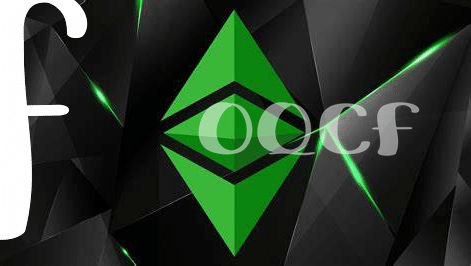Origins: Ethereum Classic Vs. Ethereum 🌱

Imagine two siblings who started out together but took different paths as they grew up. Initially, Ethereum was just one big happy family, a digital ledger where developers could build apps and agreements that enforce themselves, known as smart contracts. But then, something happened that made the family choose sides, leading to the birth of Ethereum Classic. This split wasn’t about a disagreement over what movie to watch on Saturday night but about how to handle a major theft.
| Ethereum | Ethereum Classic |
|---|---|
| Embarked on a new path with altered rules | Chose to stick to the original game plan |
| Focuses on evolving and adapting | Values immutability, preserving the ledger as it was |
This family saga all boils down to one’s philosophy towards change and growth. While Ethereum Classic stands as a testament to the original blockchain, unaltered even in the face of adversity, Ethereum itself chooses innovation, aiming to expand and improve its capabilities. It’s a narrative of tradition versus evolution, each with its distinct charm and challenges.
The Big Split: Understanding the Dao Attack 🍴
Imagine two siblings growing up together, sharing toys and dreams, until one day, an argument leads them to go their separate ways. This is somewhat what happened in the world of Ethereum. Before the split, there was just Ethereum, a vibrant new landscape for developers to build applications on a blockchain. But then, something big happened. It was called the DAO attack, a twist in the plot that no one saw coming. In 2016, a hacker found a way into the DAO (Decentralized Autonomous Organization) and siphoned off a chunk of Ethereum’s digital currency. This was a big deal because the DAO was like a digital fund meant to support future projects on Ethereum. The community had to make a choice: reverse the hack to return the stolen funds, which meant altering the blockchain’s history, or accept the loss and move on.
Choosing to reverse the hack led to the birth of a new version of Ethereum, now just called Ethereum, with the original continuing under the name Ethereum Classic. This decision wasn’t easy. It was like pressing a big reset button, which not everyone agreed was the right move. This divide created two camps: one that believed in an immutable ledger where transactions, once recorded, shouldn’t be altered (Ethereum Classic) and another that valued the community’s consensus to rectify exceptional wrongs (Ethereum). This split was more than just a technical tweak; it was a philosophical division on how the future of blockchain technology should unfold. If you’re curiously nibbling on the edges of more blockchain knowledge, diving into topics like mining might be your next adventure. https://wikicrypto.news/solo-mining-vs-pool-mining-in-ethereum-a-comparative-analysis could be the repository where your curiosity finds its treasure, shedding light on intricacies like solo vs pool mining in Ethereum’s landscape.
Technical Tweaks: Differences in Code and Capability 🔧

Diving into the world of Ethereum Classic and Ethereum, it’s like opening up two watches from the same maker to see the differences in their inner workings 👀. On the surface, they might look similar, but inside, the gears and cogs are arranged differently, influencing how they tick. Ethereum Classic operates much like the original model, sticking closely to the original blueprint laid out before the big split. Its code and capabilities have remained relatively unchanged, prioritizing a no-changes philosophy to its blockchain ledger. On the flip side, Ethereum is like a watch that’s been upgraded with the latest tech. It has evolved, introducing smart contracts that can automatically execute transactions if certain conditions are met, making it a bustling hub for new applications and innovations 🚀. One of the most significant technical changes in Ethereum is its ongoing transition from proof-of-work to proof-of-stake, a move aimed at making it faster, more energy-efficient, and capable of handling more transactions. While Ethereum Classic clings to the original proof-of-work model, less energy-efficient but arguably more straightforward and proven over time. These technical differences aren’t just about bragging rights; they shape what kinds of projects and developers are attracted to each platform, like two different ecosystems growing from the same root 🌿.
Security Measures: Comparing Protection Against Attacks 🛡️

In the world of digital currencies, where security is as crucial as the air we breathe, Ethereum Classic and Ethereum have set their camps, armed to the teeth with their unique fortifications against the cyber threats lurking in the shadows. Picture Ethereum Classic as a sturdy fortress, standing tall with its original Ethereum protocol, where changes are cautious and methodical, aiming to keep invaders at bay with layers of solid, time-tested defenses. On the other side of the moat, Ethereum advances like a high-tech empire, continuously updating its walls with the latest advancements in blockchain defense mechanisms, ensuring that any loophole exploited by cybercriminals is patched before the next moon. Both realms are devoted to defending their territories, but they do so with different philosophies and tools at their disposal. Imagine one using a colossal shield handed down from the ancestors, while the other employs a force field that adapts to the attack’s nature. Amidst this battle against digital threats, the importance of staying informed and resilient is paramount, a lesson echoed in the evolving landscape of cryptocurrency mining, vividly captured in the insights found at tether. As the drumbeats of potential future skirmishes echo in the distance, each community stands vigilant, constantly fortifying, knowing that in the world of blockchain, the next assault could come from anywhere, anytime.
Community and Support: Who Backs Whom? 👥
In the world of digital currency, the support behind Ethereum (ETH) and Ethereum Classic (ETC) tells a story of community, belief, and direction. 🌐💬 For starters, Ethereum enjoys the backing of a large and active community, including developers, investors, and a bustling ecosystem of decentralized applications (dApps). This support is not just in numbers but in the robust development and innovation that continues to push Ethereum to new heights. The Ethereum Foundation, a key organization driving its growth, plays a significant role in supporting research and development activities, offering grants to projects that contribute to the Ethereum ecosystem.
On the flip side, Ethereum Classic has a smaller, but fiercely loyal community. The core supporters of ETC are purists who value the original ethos of the Ethereum blockchain, emphasizing “code is law.” 🛡️❤️ This community may not have the same financial muscle or numbers as Ethereum’s, but it has a committed base of developers and users who believe in the project’s potential and values. Despite being under the radar compared to Ethereum, Ethereum Classic has received support from a few significant players in the crypto space, signaling a promising, albeit slower, path of growth.
| Aspect | Ethereum (ETH) | Ethereum Classic (ETC) |
|---|---|---|
| Community Size | Large and Diverse | Smaller and Focused |
| Support Type | Wide-ranging (Developers, Investors, dApps) | Purists and Fundamentalists |
| Key Supporting Entity | Ethereum Foundation | Independent Developers and Small Entities |
Future Paths: Predicting Their Evolutions 🚀

When looking forward toward what the future might hold for both Ethereum Classic and Ethereum, it’s like trying to predict the path of two rockets launched towards space. Ethereum Classic aims to maintain the original protocol, emphasizing principles like immutability, which means once something is recorded on its blockchain, it cannot be altered or erased. This dedication to originality could attract users who value unchangeable records above all. On the flip side, Ethereum continues to evolve, embracing changes that enhance its functionality and efficiency. The network’s shift towards a more energy-efficient consensus mechanism, often talked about in the context of Ethereum 2.0, signifies its commitment to innovation and sustainability. Such advancements could position Ethereum as a more attractive option for developers and users seeking a green and scalable blockchain solution.
Amidst these evolutionary journeys, the importance of community support and technological robustness cannot be overstated. For those interested in the technical aspects or considering becoming part of the ecosystem, digging deeper into how each network is fine-tuning its technology is crucial. Whether you’re gravitating towards Ethereum with its forward-thinking upgrades or Ethereum Classic with its steadfast adherence to the original vision, understanding the nuances is key. If you’re curious about how to get involved or want more technical insight, check out this litecoin mining overview on an Ethereum mining pool. As both Ethereum Classic and Ethereum carve their paths forward, it’s the community’s support, innovation, and security measures that will truly shape their trajectories.
